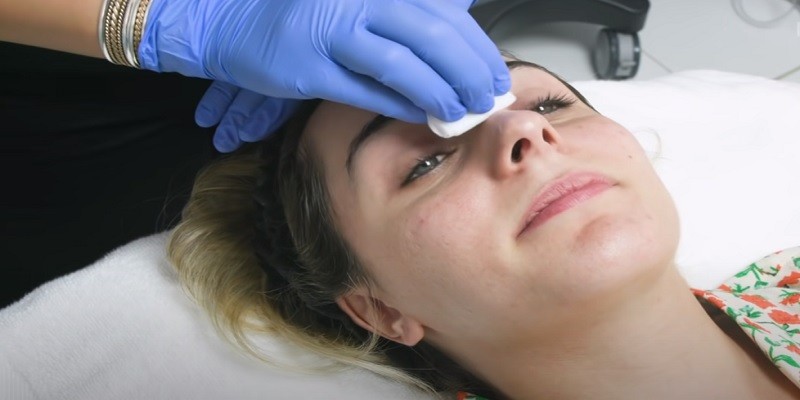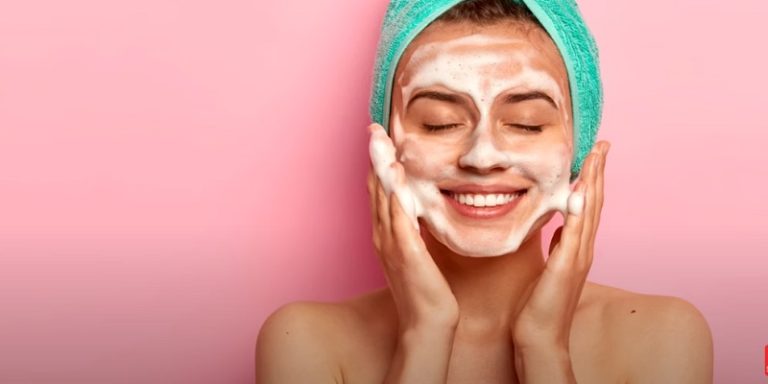What Is Skin Pilling?

Last Updated on June 18, 2025 by Jaclyn A. Neeley
Skin pilling is the process in which dead skin cells accumulate on the surface of the skin, resulting in a rough and uneven texture. This can cause the skin to appear dull and can also lead to clogged pores and breakouts.
To effectively treat skin pilling, it is important to exfoliate regularly to remove dead skin cells and promote cell turnover. Additionally, maintaining a balanced skincare routine and using products formulated for your skin type can help prevent skin pilling and promote a smooth and healthy complexion.
By understanding the causes and implementing proper skincare practices, you can effectively address skin pilling and achieve a radiant and clear complexion.

Credit: poshskinessentials.com
Causes Of Skin Pilling
Understanding the causes of skin pilling is essential for maintaining healthy, smooth skin. Skin pilling occurs when dead skin cells accumulate, moisture levels are inadequate, or friction is consistently applied to the skin. Let’s delve deeper into each of these factors:
Excessive Dead Skin Cells
Excessive dead skin cells can lead to the unsightly phenomenon of skin pilling. As our skin naturally regenerates, old skin cells are shed to make way for new ones. However, certain factors such as improper exfoliation, environmental pollution, or skin disorders can disrupt this natural process. When dead skin cells accumulate on the surface of the skin, they can form clumps and contribute to the pilling effect. Regular exfoliation, using gentle scrubs or chemical exfoliants, can help remove the buildup of dead skin cells and prevent pilling.
Lack Of Moisture
Moisture is crucial for maintaining smooth and supple skin. When the skin lacks adequate moisture, it can become dry, rough, and prone to pilling. Factors such as cold weather, dry climates, excessive sun exposure, or using harsh skincare products can deplete the skin’s natural moisture levels. Additionally, certain underlying skin conditions like eczema or psoriasis can also contribute to dryness and pilling. To combat this issue, it’s important to prioritize hydration by using moisturizers that suit your skin type, incorporating hydrating serums, and drinking plenty of water.
Friction
Friction is another key factor that can cause skin pilling. When the skin is subjected to constant rubbing or friction, such as excessive rubbing during skincare routines or wearing rough and tight clothing, it can lead to irritation and pilling. Areas that are more prone to friction-induced pilling include the elbows, knees, and thighs. To minimize this issue, opt for gentle skincare techniques and products, wear soft and breathable clothing, and avoid excessive rubbing or scratching of the skin.

Credit: sublimelife.in
Effects Of Skin Pilling
Skin pilling, also known as balling or rolling, is a common skin concern that occurs when dead skin cells or products form clumps on the surface of the skin. This can give your skin a rough and uneven texture, affecting its overall appearance. Additionally, skin pilling can cause makeup application to be less smooth and can even impact your skin health.
Texture And Appearance
One of the noticeable effects of skin pilling is the change in texture and appearance of the skin. When dead skin cells and products accumulate on the surface, they can create a bumpy and uneven texture, making your skin feel rough to the touch. This can be especially frustrating if you have been diligently following a skincare routine but still notice this unwanted outcome. Skin pilling can also make your skin look dull and lackluster, as the clumps of dead skin cells and product residue can prevent light from reflecting off your skin naturally.
Makeup Application
Skin pilling can have a significant impact on the way your makeup looks and applies. When applying foundation, powder, or any other makeup products, the clumps of dead skin cells and products can interfere with the smooth application. This can result in an uneven and patchy makeup finish, making it more difficult to achieve a flawless look. Makeup products can also cling to the clumps on the skin’s surface, emphasizing the texture and making the pilling more apparent. To ensure a smooth and seamless application, it is essential to address the issue of skin pilling first.
Skin Health
Beyond the cosmetic concerns, skin pilling can also impact your skin health. When dead skin cells and product buildup accumulate on the skin, they can clog pores, leading to breakouts and blackheads. These clumps can also prevent the proper absorption of skincare products, reducing their effectiveness. Furthermore, the rough texture caused by skin pilling can compromise the skin’s barrier function, making it more susceptible to environmental stressors and moisture loss. Therefore, addressing skin pilling is crucial not only for the appearance of your skin but also for its overall health and well-being.
Prevention And Treatment
Skin pilling refers to the peeling of dead skin cells on the surface, resulting in a rough and uneven texture. Prevention includes regular exfoliation and moisturization, while treatment involves using gentle scrubs and hydrating skincare products to promote healthy skin renewal.
Exfoliation
One of the key ways to prevent and treat skin pilling is through regular exfoliation. Exfoliation helps remove dead skin cells and unclog pores, allowing fresh, healthy skin to surface. By incorporating this step into your skincare routine, you can maintain a smooth and even complexion.
There are different ways to exfoliate, depending on your skin type and preference. Physical exfoliation involves using a scrub or a brush to gently slough off dead skin cells. On the other hand, chemical exfoliation utilizes ingredients like alpha-hydroxy acids (AHAs) or beta-hydroxy acids (BHAs) to dissolve the bonds between dead skin cells.
Moisturization
Another crucial aspect of preventing skin pilling is proper moisturization. Dry skin is more prone to flaking and peeling, which can contribute to pilling. By keeping your skin adequately hydrated, you can minimize the risk of experiencing this issue.
Choose a moisturizer that suits your skin type and provides long-lasting hydration. Look for ingredients like hyaluronic acid, glycerin, or ceramides, which help attract and lock in moisture. Apply moisturizer both in the morning and at night to maintain a replenished moisture barrier on your skin.
Avoiding Harsh Fabrics
Your choice of clothing can play a significant role in preventing skin pilling. Harsh fabrics, such as rough wool or polyester, can cause friction against the skin, leading to irritation and pilling. Opt for softer fabrics like cotton or silk, which are gentle on the skin and less likely to cause problems.
If you enjoy wearing wool or synthetic materials, consider layering them with a soft cotton or silk garment underneath, creating a protective barrier between the fabric and your skin. This simple precaution can help decrease the chances of skin pilling and keep your skin comfortable throughout the day.

Credit: www.reddit.com
Frequently Asked Questions Of What Is Skin Pilling?
What Does It Mean When Your Skin Is Pilling?
Skin pilling occurs when dead skin cells accumulate on the surface, forming clumps or flakes. It can be caused by dryness, friction, or inadequate exfoliation. Regular exfoliation and moisturizing can help prevent skin pilling and promote a smoother, healthier complexion.
How Do You Get Rid Of Pilling On Your Skin?
To get rid of pilling on your skin, exfoliate regularly with a gentle scrub or brush. Moisturize daily with a hydrating lotion or cream. Avoid using harsh chemicals or products that can irritate the skin. Maintain a healthy diet and hydrate your body by drinking plenty of water.
What Does Pilling Look Like?
Pilling is when small balls or fuzz form on the surface of fabric, making it look worn and shabby. It’s caused by friction and rubbing, usually from regular wear and washing. Pilling happens more often with fabrics like wool and synthetics, and can be prevented by using a fabric shaver or avoiding excessive friction.
Does Pilling Mean Too Much Moisturizer?
Pilling does not necessarily mean too much moisturizer. Pilling occurs when products clump on the skin, which can be caused by a variety of factors such as incompatible ingredients or application techniques. Adjusting the amount of moisturizer used may help, but it’s not always the main culprit.
What Is Skin Pilling?
Skin pilling refers to the build-up of dead skin cells on the surface, creating a rough texture.
What Causes Skin Pilling?
Skin pilling can be caused by a lack of exfoliation, dryness, or using harsh skincare products.
Conclusion
To sum up, skin pilling is a common skin condition that occurs when dead skin cells accumulate on the surface of the skin, resulting in a rough and uneven texture. It can be caused by various factors such as aging, dryness, and improper skincare habits.
The good news is that skin pilling can be prevented and treated with proper exfoliation, moisturization, and a healthy skincare routine. So, take care of your skin and bid farewell to skin pilling for good!






